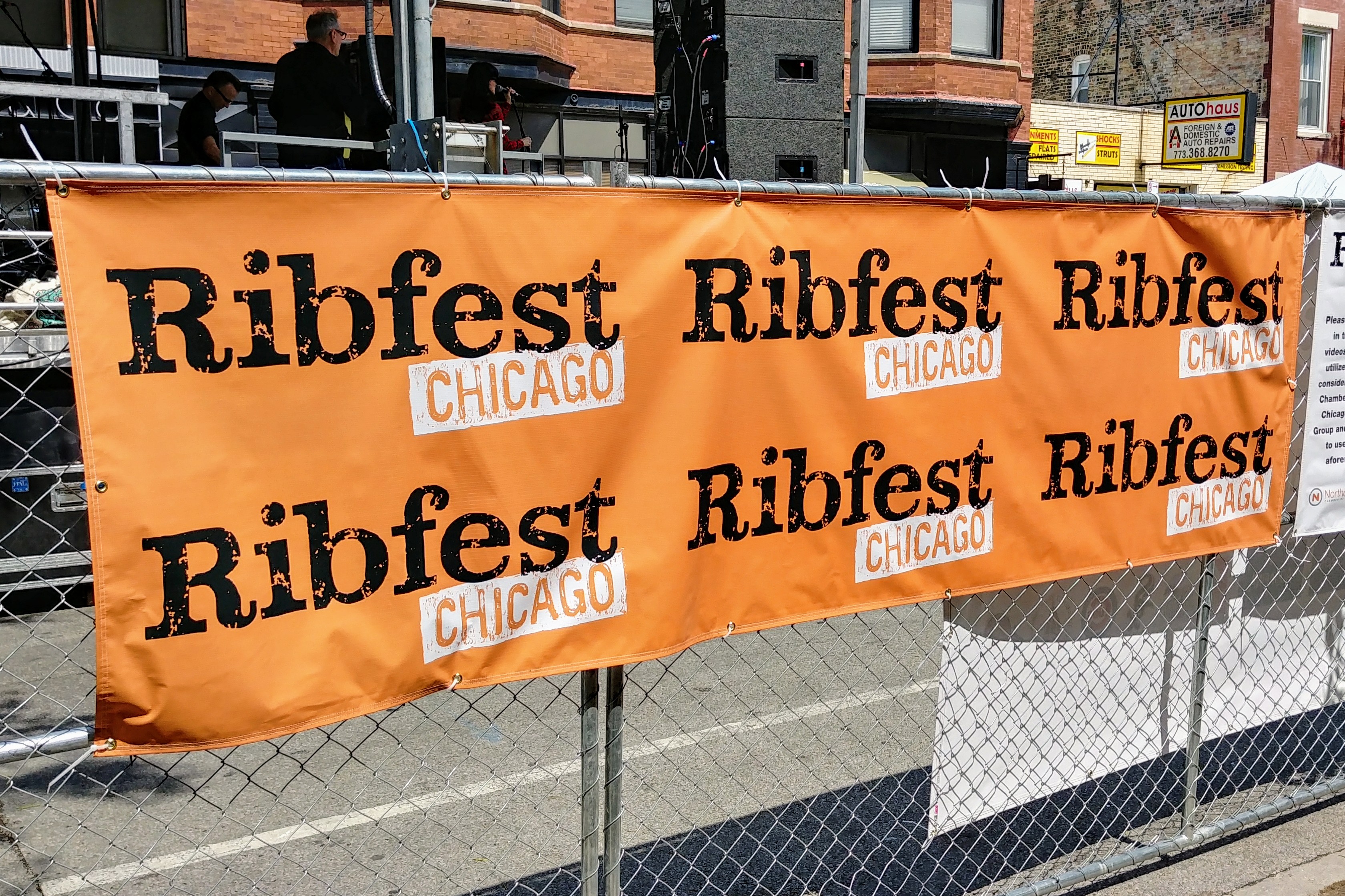That's my guess for how often Chicago's weather looks like this. Today's forecast calls for cloudless 23°C skies and a cool, clear evening.
So, naturally, I'm going to try to walk 30 klicks.
And I'm totally not watching the England/Sweden match that's on right now. Nope.
I didn't have a chance to read these yesterday:
Now I'm off to work. The heat wave of the last few days has finally broken!
As I eagerly await the start of the England-Columbia World Cup match that starts in a few minutes, I'm taking a moment to absorb Emily Atkin's report on the political implications of encased meats:
[T]he rise of cheap meats—fueled by hot dogs but also salisbury steaks—fed into more nationalist sentiments, too. Americans began to feel as though they were better than Europeans, who didn’t have enough land for grazing to make meat cheap enough for the masses. “If you’re a working-class factory worker in Liverpool, you’re not going to eat as much meat,” Kraig said. “But working-class Americans could get it, and they knew that,” feeding a patriotic sense of superiority that played into late-nineteenth century American xenophobia, as well. In turn, “Most Europeans were absolutely appalled” by the level of meat-eating in early America, Kraig said. Hot dogs brought Americans together while setting them apart from the rest of the world.
But it was twentieth-century advertisers who turned hot dogs into a nation-wide, values-linked symbol of American identity. In the 1930s and 40s, The Visking Corporation—which sold “Skinless”-brand wieners—advertised them as a July 4 food; a food for fighting soldiers; a food that was good for rationing (since there was “no peeling or waste”; and a food that was good for kids.
In the middle of the century, patriotism, nationalism, xenophobia, and an emphasis on traditional family structures proliferated regardless of party identity. The values that fueled hot dog patriotism, however, are held most strongly today within the Republican Party, which perhaps explains the political leanings of the National Hot Dog and Sausage Council. The group—which promotes July as National Hot Dog Month, July 19 as National Hot Dog Day, and holds an annual hot dog lunch for Congress—was founded by the North American Meat Institute (NAMI), which sends 81 percent of its political donations to Republicans. For years, groups like NAMI have lobbied against federal nutritional guidelines recommending eating less meat. Once, NAMI called a criticism of the meat industry an attack on the “American way of life.”
Because everything today is about politics. Even a food made of pork byproducts.
The Uptown Theater in Chicago will reopen in a few years after developers raised $75m for renovations:
The theater, a Spanish Baroque Revival dazzler designed by the kings of movie palace architecture, C.W. and George L. Rapp, is an emblem of Uptown’s lost glamour. Graffiti mars its exterior. Near the top of its bright red marquee, some of the script letters that spelled out the names of its developers, the theater chain owners Balaban & Katz, are missing, like gaps in a row of teeth.
Little is known at this point about the plans of the new developer, Chicago-based Farpoint Development, which is said to have cobbled together $75 million in public and private funds to revive the theater, located at 4816 N. Broadway.
If the Uptown really does wind up being reborn, it will mark a major change from 1961, which witnessed the destruction of Dankmar Adler and Louis Sullivan’s Garrick Theater, a masterpiece of the first Chicago School of Architecture, and its replacement by a parking garage. Along with the demolition of the Chicago Stock Exchange Building in the early 1970s, that traumatic event helped lead to the creation of today’s strong preservation movement in Chicago and the Uptown’s bright new prospects.
Uptown, like Logan Square, has been "the next hot neighborhood" for about 20 years. I'm hopeful that the Uptown Theater will reopen soon, and revitalize the Broadway corridor once again.
The owner of the property that houses Chicago's infamous Wieners Circle hot-dog stand has put it up for sale:
The Wieners Circle, that Lincoln Park institution known as much for its late-night insults as its hot dogs, may soon have to take its shtick somewhere else.
The hot dog stand's longtime landlord has hired a broker to sell the Clark Street property and an apartment building next door, potentially setting the stage for a developer to raze the 36-year-old restaurant and put up apartments or condos in its place.
"Obviously, a 700-square-foot, single-story restaurant is not the highest and best use for that lot," said Jeff Baasch, senior vice president at SVN Chicago Commercial, the brokerage marketing the property to investors.
Under current zoning, a developer could renovate the five-story apartment building, which "needs work," Baasch said, and also put up a building with ground-floor commercial space topped by about six residential units on the Wieners Circle site.
That's too bad. The Wieners Circle is a Chicago legend. And here, via Conan O'Brian, is a glimpse through the doors:
Meetings and testing all day have put these on my list for reading tomorrow:
And with that, it's the weekend.
That's the conclusion of a researcher at the University of South Australia:
Cecilia Pemberton at the University of South Australia studied the voices of two groups of Australian women aged 18–25 years. The researchers compared archival recordings of women talking in 1945 with more recent recordings taken in the early 1990s. The team found that the “fundamental frequency” had dropped by 23 Hz over five decades – from an average of 229 Hz (roughly an A# below middle C) to 206 Hz (roughly a G#). That’s a significant, audible difference.
The researchers had carefully selected their samples to control for any potential demographic factors: the women were all university students and none of them smoked. The team also considered the fact that members of the more recent group from the 1990s were using the contraceptive pill, which could have led to hormonal changes that could have altered the vocal chords. Yet the drop in pitch remained even when the team excluded those women from their sample.
Instead, the researchers speculated that the transformation reflects the rise of women to more prominent roles in society, leading them to adopt a deeper tone to project authority and dominance in the workplace.
I have a lot of friends who might agree; some of them sing soprano and speak tenor. No joke.
Chances are, that bourbon you're drinking came from an industrial distillery in southern Indiana:
In just the last 10 years, the number of craft distilleries in this country has ballooned from around 100 to more than 1,400. That growth is a product of consumer demand, but it’s also due to the easing of state distillation laws and the availability of sourced whiskey from suppliers like MGP in Lawrenceburg, Indiana.
Templeton Rye — marketed as Al Capone’s favorite whiskey and proud product of Templeton, Iowa — is also distilled by MGP. Tincup Whiskey, a self-described “mountain whiskey” replete with commercials conjuring a frontiersman image and Rocky Mountain ethos, is mostly MGP, too.
Those brands aren’t alone in their Indiana provenance. Even super-premium brands like High West and Whistle Pig have sourced from MGP at some point in their respective histories. And the list goes on.
MGP isn’t a household name in bourbon, but it’s well known among industry insiders and connoisseurs. With distilling operations headquartered in the old Seagram’s Distillery in Lawrenceburg, Indiana, MGP is one of the largest whiskey sourcers in the industry.
So why do so few people know MGP’s name?
For one, it maintains strict confidentiality agreements with all of its customers; the purchasing brand only has to reveal MGP as its source if it wants to — an option many decline.
In addition, labeling regulations only require that the bottler list in which state the liquid was distilled — easily done in tiny print on the back of the bottle.
This is why I've got Trader Joe's $15 "Kentucky Bourbon" at home instead of $60 Whistle Pig. It's the same whiskey.
Single-malt Scotch, on the other hand, is by UK law exactly what it says on the bottle.
Ah, Ribfest. The bane of my diet.

This year I went back to a couple of old favorites and tried a couple of new ones:
- Chicago BBQ: Smoky, a little tug off the bone, tangy sauce. 3½ stars.
- Mrs. Murphy's Irish Bistro: Like last year, they glooped on a lot of (delicious) sauce. But the meat tasted better this year, and I got a bit of a lagniappe. 3 stars.
- Old Crow Smokehouse: I haven't tried them before. They were decent. Good smoke taste, but a little fatty and not a lot of sauce. 3 stars.
- Fireside Restaurant: The best sauce of the day, tangy and a little citrus. Good meat, smoke, and char.
I may go tomorrow. If I can digest today's bones.
Every so often I like to revisit old photos to see if I can improve them. Here's one of my favorites, which I took by the River Arun in Amberley, West Sussex, on 11 June 1992:

The photo above is one of the first direct-slide scans I have, which I originally published here in 2009, right after I took this photo at nearly the same location:

(I'm still kicking myself for not getting the angle right. I'll have to try again next time I'm in the UK.)
Those are the photos as they looked in 2009. Yesterday, during an extended internet outage at my house, I revisited them in Lightroom. Here's the 1992 shot, slightly edited:

And the 2009 shot, with slightly different treatment:

A side note: I did revisit Amberley in 2015, but I took the path up from Arundel instead of going around the northern path back into Amberley as in 2009, so I didn't re-shoot the bridge. Next time.